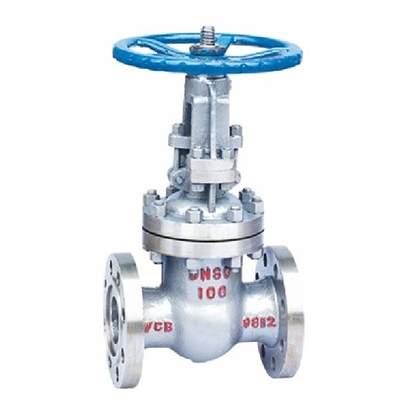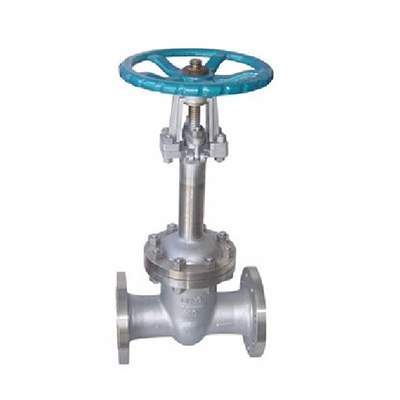Welcome to My Blog!
Before we dive into the content, I’d love for you to join me on my social media platforms where I share more insights, engage with the community, and post updates. Here’s how you can connect with me:
Facebook:https://www.facebook.com/profile.php?id=61563865935136
Now, let’s get started on our journey together. I hope you find the content here insightful, engaging, and valuable.
Introduction

In the world of fluid control, the stainless steel gate valve stands as a stalwart, offering reliability and durability in a wide range of applications. From industrial plants to water treatment facilities, these valves play a crucial role in managing the flow of liquids and gases, ensuring efficient and safe operations. Their robust construction and resistance to corrosion make them a preferred choice in demanding environments. This blog post will delve into the intricacies of stainless steel gate valves, exploring their types, applications, benefits, and maintenance, while also addressing frequently asked questions to provide a comprehensive understanding.
Understanding Stainless Steel Gate Valves
A gate valve is a linear motion valve that opens or closes by lifting a gate-like disc perpendicular to the flow direction. This simple yet effective mechanism provides a clear on/off control of the fluid. Stainless steel gate valves are specifically designed using stainless steel alloys, which provide excellent corrosion resistance, making them suitable for harsh environments and various media, including aggressive chemicals and high-temperature fluids. This material choice ensures longevity and reduces the risk of contamination.
Types of Stainless Steel Gate Valves
Stainless steel gate valves come in various designs, each catering to specific needs and operational requirements. Understanding these different types is crucial for selecting the right valve for your application.
- Rising Stem Gate Valves: The stem rises when the valve is open, visually indicating the valve’s position. This makes it easy to determine whether the valve is open or closed at a glance.
- Non-Rising Stem Gate Valves: The stem does not move up or down, making them suitable for space-constrained environments where vertical clearance is limited. These valves are often preferred in underground or tightly packed installations.
- Solid Wedge Gate Valves: Employ a solid gate for simple on/off control, offering a basic and reliable solution for many applications. They are generally less expensive than other wedge types.
- Flexible Wedge Gate Valves: Feature a slightly flexible gate to accommodate minor misalignments or thermal expansion, ensuring a tight seal even under challenging conditions. This flexibility helps prevent leaks and extends the valve’s lifespan.
- Split Wedge Gate Valves: Utilize a two-piece gate that can better seal against debris or solids in the flow, making them ideal for applications where particulate matter is present. The split wedge design helps prevent jamming and ensures reliable closure.
Key Applications of Stainless Steel Gate Valves
Stainless steel gate valves find applications across diverse industries, showcasing their versatility and adaptability. Their ability to handle various media and operating conditions makes them essential in many processes.
- Oil and Gas: Controlling the flow of crude oil, natural gas, and refined products, often in extreme temperatures and pressures. Their corrosion resistance is vital in this industry.
- Chemical Processing: Handling corrosive and reactive chemicals, where material compatibility is paramount for safety and efficiency. Stainless steel’s resistance to chemical attack makes it ideal.
- Water and Wastewater Treatment: Managing water flow in distribution and treatment systems, ensuring clean and safe water delivery. Their resistance to rust and biological growth is essential here.
- Pharmaceuticals: Ensuring hygienic and sterile fluid control in drug manufacturing, where contamination is a significant concern. Stainless steel’s smooth surface and ease of cleaning are crucial.
- Food and Beverage: Maintaining sanitary conditions in food processing and bottling plants, preventing bacterial growth and ensuring product quality. Their compliance with sanitary standards is a must.
Advantages of Choosing Stainless Steel Gate Valves
The popularity of stainless steel gate valves stems from their numerous advantages, making them a preferred choice among engineers and maintenance professionals. These benefits contribute to their long-term value and cost-effectiveness.
- Corrosion Resistance: Stainless steel’s inherent resistance to rust and oxidation ensures longevity, even in harsh environments. This reduces maintenance costs and extends the valve’s service life.
- Durability: These valves can withstand high pressures and temperatures, making them suitable for demanding applications. Their robust construction ensures reliable performance under stress.
- Reliability: They provide a tight seal, preventing leaks and ensuring efficient fluid control. This minimizes product loss and environmental impact.
- Versatility: Suitable for various media and applications, from water to chemicals to gases. This adaptability simplifies system design and reduces inventory requirements.
- Ease of Operation: Simple to open and close, requiring minimal effort. This makes them user-friendly and efficient in operation.
- Low Maintenance: Require minimal upkeep, reducing downtime and maintenance costs. Their robust design minimizes the need for repairs and replacements.
Selection Criteria for Stainless Steel Gate Valves
Choosing the right stainless steel gate valve involves considering several factors to ensure optimal performance and compatibility. A thorough assessment of your specific needs is essential.
- Material Compatibility: Ensure the valve’s material is compatible with the media being handled to prevent corrosion or contamination. Consider the chemical properties of the fluid.
- Pressure and Temperature Ratings: Select a valve that can withstand the system’s operating conditions, including both pressure and temperature extremes. Safety and reliability depend on this.
- Size and Connection Type: Match the valve’s size and connection to the piping system for proper installation and flow efficiency. Incorrect sizing can lead to leaks or flow restrictions.
- Type of Operation: Choose between manual, pneumatic, or electric actuation based on requirements, considering factors like automation and remote control. The operating mechanism should suit your needs.
- Industry Standards and Certifications: Ensure compliance with relevant standards, such as API or ASME, for safety and quality assurance. This ensures the valve meets industry benchmarks.
Maintenance and Care for Stainless Steel Gate Valves

To ensure the longevity and optimal performance of stainless steel gate valves, regular maintenance is essential. A proactive approach to maintenance can prevent costly repairs and extend the valve’s lifespan.
- Periodic Inspection: Check for signs of wear, corrosion, or leakage, identifying p otential problems early on. Regular inspections can prevent catastrophic failures.
- Lubrication: Apply appropriate lubricant to the stem and other moving parts to reduce friction and ensure smooth operation. Proper lubrication is crucial for ease of use and longevity.
- Cleaning: Remove debris or buildup that could affect the valve’s operation, ensuring a tight seal and preventing blockages. Cleanliness is essential for reliable performance.
- Tightening: Ensure all connections are secure to prevent leaks and maintain system integrity. Loose connections can lead to safety hazards and inefficiencies.
- Replacement: Replace worn-out parts promptly to prevent further damage and ensure continued reliable operation. Timely replacement is key to preventing major failures.
Conclusion
Stainless steel gate valves are indispensable components in various industries, providing reliable and durable flow control. Their corrosion resistance, versatility, and ease of operation make them a preferred choice for demanding applications. By understanding their types, selection criteria, maintenance needs, and frequently asked questions, you can ensure the optimal performance and longevity of your stainless steel gate valves. Investing in high-quality valves and implementing a robust maintenance program will pay dividends in the long run.
FAQ
What is the primary function of a stainless steel gate valve?
A stainless steel gate valve’s primary function is to start or stop the flow of fluid. It is not typically used for throttling flow; it’s designed for on/off control. When fully open, it offers minimal flow restriction.
What are the common types of stainless steel used in gate valves?
The most common types are 304 and 316 stainless steel, each offering different levels of corrosion resistance. 304 is a general-purpose stainless steel, while 316 offers enhanced resistance to pitting and crevice corrosion, especially in chloride environments.
How do I choose the right size of stainless steel gate valve?
Consider the pipe size, flow rate, and pressure drop requirements of your system. Consult flow charts and valve sizing information provided by the manufacturer. Proper sizing is crucial for efficient operation.
Are stainless steel gate valves suitable for high-temperature applications?
Yes, some stainless steel gate valves are designed for high-temperature service. Check the manufacturer’s specifications for the specific temperature limits of the valve. Specialized high-temperature valves are available for extreme conditions.
How often should I inspect my stainless steel gate valves?
The frequency depends on the application and operating conditions. Regular inspections, at least annually, are recommended, and more frequent inspections may be necessary in critical applications. A risk-based approach to maintenance is always recommended.
